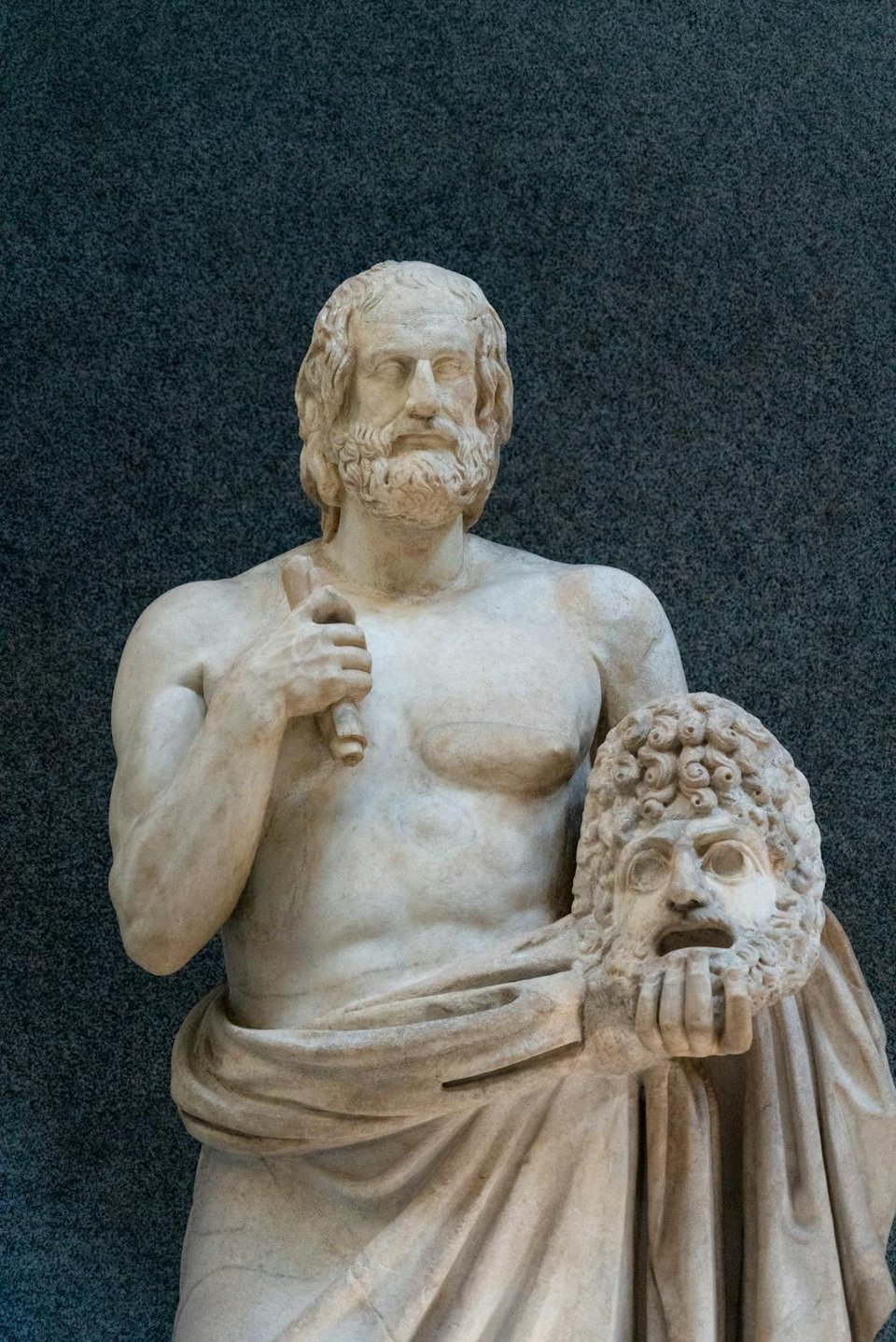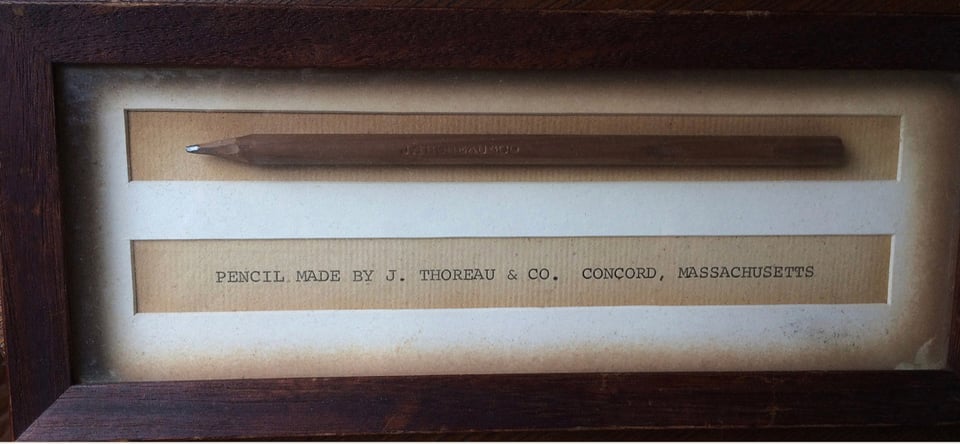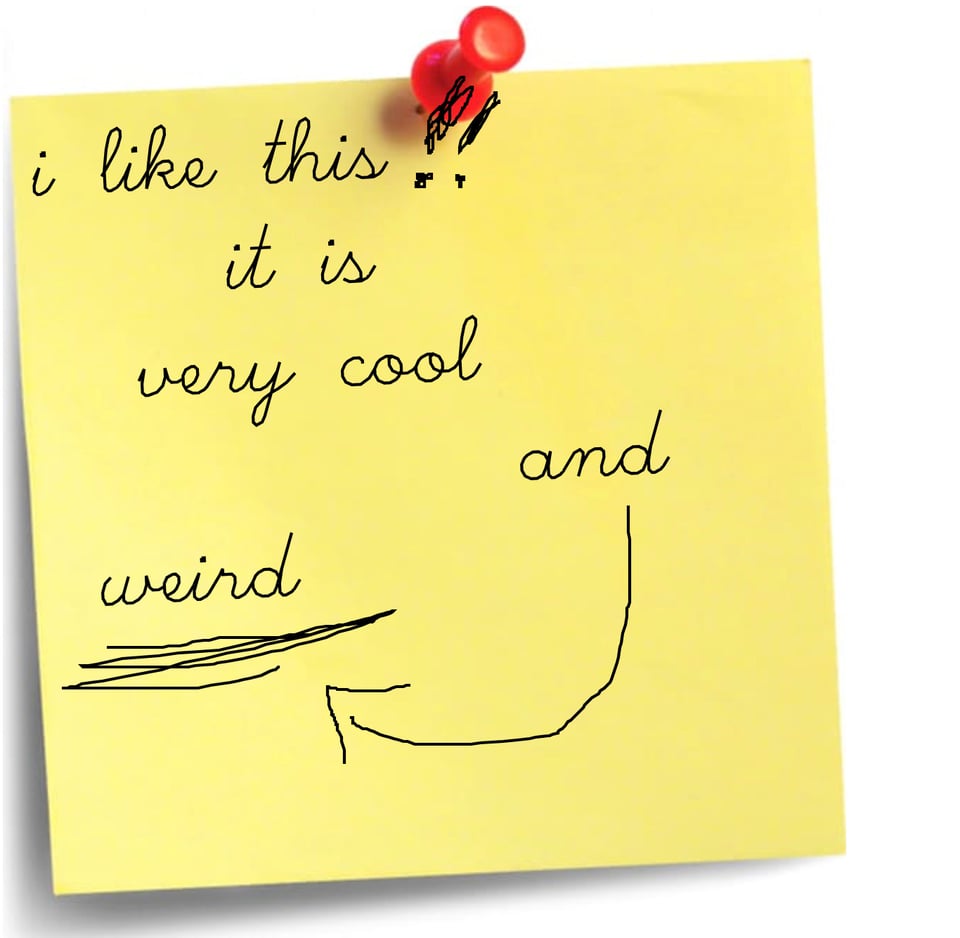Linkfest #24: Secret Cars, New Euripides, and "The Torino Impact Hazard Scale"
Hello there!
It’s time for my latest “Linkfest” — i.e. "the opposite of doomscrolling”, in which I carefully and patiently boil the entire Internet to produce a delicious reduction of its most essential items on science, culture and technology.
If you’re a subscriber, thank you! If not, you can sign up here — it’s a pay-what-you-want affair; the folks who can afford to contribute help keep it free for everyone else. And, heyo: Forward this email to anyone you think would like it!
Let’s start ...
1) 📡 Your name in Landsat images

“Your Name In Landsat” does exactly what the name promises — you type in your name, and it finds a satellite picture of the earth where the landscape makes the shape of each letter. That’s my name above!
Next up: Using this as a word processor, writing a script that feeds in the entirety of Moby Dick, and having the output custom-printed. It would probably fill a few bookshelves.
Gotta love the web nerds at NASA for pulling this off.
2) 🚋 The tram Olympics

In the New York Times (gift link), Amelia Nierenberg has a dispatch from Europe’s annual “tram driver Olympics” — in which tram operators from around the continent compete in tests of skill.
For example …
Some events focused on safety: Drivers had to emergency brake at a precise spot, just as if a cyclist had swerved in front of them. Another tested their ability to multitask: Could they remember a series of symbols that appeared on mock traffic signs?
One test was downright counterintuitive: Tram billiards, in which a driver steers the vehicle to gently knock a pool cue attached to a stand into a billiard ball on a table. (The highest possible score for the billiards portion was 500 points, awarded if the ball rolled to a stop right in the middle of the table.)
“It’s not often you’re trying to hit something with your tram,” joked Victoria Young, 39, of Edinburgh. “You’ve just got this feeling inside you that says, ‘I should be stopping now.’”
As Nierenberg notes, these tests of skill aren’t entirely disconnected from the tram-drivers’ daily work; one does, of course, want a smooth tram ride. The exception might be the billiards competition: “It’s not often you’re trying to hit something with your tram,” as one operator notes.
3) 📊 Visualizing ship traffic

For safety purposes, American ships have to broadcast their location every few minutes. It’s all public data, collected by the government — so Jon Keegan, an investigative data journalist, downloaded everything for 2023 and used it to make some gorgeous and mesmerizing visualizations.
Above? Those are the pathways of lobster boats off the coast of Maine. He’s got over two dozen more images in a blog post where he describes the data and his visualization process.
The resulting maps are abstract, electric and revealing. When you remove the landmasses from the map and leave only the ship traces, the lines resemble long-exposure photos of sparklers, high-energy particle collisions, or strands of illuminated fiber optic wire. However, when you reveal ports, harbors, islands, and ferry lines, the ship traces take on meaning and order.
Only by adding the fourth dimension—time—can we fully appreciate the etched markings of our journeys across rivers, lakes, and oceans.
When you zoom into these maps, you can sometimes make out eerie patterns that look like crude graffiti scratched with a sharp pen, or neat clusters of geographic lines. Some of these are fishing grounds, others scientific surveys mapping the sea floor, and others show the traffic of boats going to and from offshore oil rigs, like the many constellations of light found off Louisiana's gulf coast.
What immediately struck me, upon seeing these for the first time, is that they looked like fractals. But then I immediately realized, well, of course they do — coastlines are themselves fractal, so the movement of the ships is inherently keyed to that mathematical pattern.
Jon, BTW, has for years now been writing witty and engrossing essays analyzing everyday design, and/or discussing other dataviz projects he has produced. He’s got a whole archive of ‘em at Beautiful Public Data: Check it out, there’s hours of reading/viewing!
4) 🍱 Gallery of old Swedish packaging

I am heavily digging this gallery of retro Swedish product packaging!
There are a ton more images over here at the Digitalt Museum …
5) 🎭 New lines of Euripides discovered

The ancient Greek tragedian Euripides was mocked in his lifetime. He was, as the classicist Robert Cioffi writes, “lampooned … for his novel sonic effects, his corruption of Athenian values and his penchant for female protagonists and characters dressed in rags — an innovator, according to his critics, but not necessarily in a good way.”
But in the long run, Euripides lucked out, because of all the ancient Greek playwrights his plays best survived the ravages of time. There were about 900 tragedies performed in 500 BCE, of which less than forty survive today; half of these are by Euripides.
Even so, we lost more Euripides than we possess. That’s what made it so exciting two years ago when archaeologists were exploring a shallow grave south of Cairo and discovered …
… whoa, a clutch of papyri containing 97 never-before-seen lines of the Euripidean plays Ino and Polyidus! Classicists knew those plays had existed, via “scattered quotations and summaries of their plots”, but they’d never read any of the actual material.
So, yeah, as a Metafilter post put it — new Euripides just dropped.
Cioffi has been studying these new chunks and wrote a wonderful essay about them, their discovery, and the challenges of translating them:
Both passages are unmistakably by Euripides. They share his love of aphorisms, his obsession with the overreach of the powerful and the dangers of cleverness. In one passage, Polyidus rebuffs Minos' demands: 'So you're rich. Don't think you understand anything else. Wealth makes you useless. It is poverty that produces wisdom.' [snip]
There are some astonishing lines in the papyrus. A lyric passage from Ino … imagines 'the ephemeral, changeable god working in secret, moving this way and that, obscurely through the clouds'. The image, uttered in a moment of abject grief, is as striking for its expression of the opacity of the divine as for its mixing of worlds — ephemerality and changeability are the defining characteristics of the mortal condition. Here, for perhaps the first time in extant Greek literature, an unnamed divinity takes on the human attributes for which he or she is responsible.
Really worth reading the whole thing here!
6) 💡 Lamp made from bio-concrete

Behold this gorgeous brutalist lamp, which is made from concrete that uses biologically-grown cement.
As the creator’s page describes it …
Using bacteria, Biolith® tiles form in under three days, compared to the 28-day curing time of traditional cement, and they don’t require energy-intensive kiln firing. This process turns aggregate into a biocement that is 20 times lighter and three times stronger than a traditional concrete block, while producing 95% fewer CO2 emissions than conventional cement.
I hadn’t heard of those biocement tiles before — very interesting, and I want to read more.
7) ✏️ Thoreau’s innovations in pencil-making

I’d long known that Thoreau — like Prince and Madonna, so famous he’s known only by one name, though his full name is “Henry Thoreau” — came from a pencil-making family, and that the money from that business is what allowed him be a writer.
But I didn’t know that Thoreau’s economic success in pencilry came specifically from his own innovations — specifically, his experiments in improving the quality of pencil lead.
Augustine Sedgewick writes about it in The American Scholar:
Henry started to dig into the complex technical problems that had made American pencils notoriously “coarse, brittle, greasy, and scratchy,” as Thoreau biographer Laura Dassow Walls describes them, especially compared with European imports. Possibly through research in the Harvard library, Henry developed a formula for kiln-fired pencil leads—a mix of finely ground graphite and clay—that could be reliably graded from hard to soft. The improved Thoreau product appealed especially to engineers, surveyors, carpenters, and artists who valued its consistency. [snip]
In 1844, Henry made another breakthrough, inventing a grinding machine that produced exceptionally fine graphite powder—the key to a strong, even point, and in turn a clear, steady line. On the strength of these innovations, Thoreau pencils won more awards in 1847 and 1849, and they were celebrated as the equal of any English ones. No one in the United States made better pencils than the Thoreaus, and the reason for their success was Henry.
Perhaps even more impressive is that Thoreau hated his father’s pencil factory, and spent years trying to avoid working in it … until he was driven there by economic necessity: Nobody else would hire him.
I’m generally fascinated by stories of famous writers who had separate business lives — like Wallace Steven’s day-job as an insurance lawyer, or William Carlos Williams’ as a doctor.
(That photo above, BTW, is of an original Thoreau pencil from the 1830s.)
8) 📃 A wee app for scribbling on post-it notes

Glitch is one of my favorite places to program and release little web toys — it’s where I made the Weird Old Book Finder and Just The Punctuation.
The Glitch folks hold a “Code Jam” every month where they announce a theme, and people create nifty little web apps on that theme. Last month the prompt was “Just Draw” — so people built tons of little gewgaws for sketching. You can see some of the entrants here.
One of my faves is Sticky Scribbles by Marty McGuire. It gives you a little post-it note, upon which you can type (it renders your text in that cool font you see) and also scribble using the mouse.
(For all you hardcore HTML nerds, when you’re done with your drawing, it lets you download the whole thing in SVG to post on your own web site. Nice!)
(Also: Marty wrote up his design notes here in a blog post.)
9) 🚮 “Garbage Time” in China

The economy in China is in a deep funk, with unemployment rising as high as 17% – so people are worried and depressed. The problem is, you’re not allowed to talk about economic malaise on social media, because the government censors the nattering nabobs of negativity.
So Chinese Internet users have found a clever way around this: they’re writing essays about “garbage time”.
Garbage time is a phrase from sports, referring to the dull, hopeless period at the end of the sports game where a team is so far behind that everyone knows they’ll never stage a comeback.
One opinion essay from February argued that Zhu Yuanzhang, who served as the Ming dynasty’s first emperor in the 14th century, plunged the entire 276-year regime into garbage time by monopolizing power, introducing isolationist trade policies and imposing harsh laws. The piece contrasted that failure with the flourishing of Britain’s economy during the Industrial Revolution in the 18th and 19th centuries, attributing the success to colonialism and free-trade policies.
I’ve long known that Chinese Internet users are masters of misdirection, using everything from memes to emoji to oblique metaphors to criticize power. But apparently historical essays are also a thing:
…they were part of a Chinese literary tradition of intellectuals avoiding censorship by criticizing rulers through historical allegories.
10) 🚗 “Secret cars”

I’m not terribly impressed by much AI-generative art, the aesthetics of which too often tend towards brown-acid-trip hyperreality; to say nothing of the ethics of their creation, via massively-scaled mastication of permissionlessly copied art in the four-stomached cows of the corporate cloud.
But every so often something comes along that seems pretty clever. Such is the case with Secret Cars, a book by the film director and photographer Mr. Francois.
Each image is inspired by one of Mr. François’s imaginative ideas, such as: What if Ferrari made a camper van? Or Lamborghini built a school bus? Or perhaps a luxurious six-seater Mini limousine? The result is a diverse collection of creative car designs, captured in realistic settings.
Above, a stretch Citroën, which if it actually existed I would want to own.
You can see more of the images at designboom, or Mr. Francois’ Instagram account; the book is in print now too.
11) 🎥 A sudden, final-death round of reading material
The “Torino impact hazard scale”. 🎥 Gen Z sock preferences. 🎥 ”Aerospike” engines. 🎥 Using Microsoft Word 2010 to side-load malware into drones. 🎥 An online radio station that plays only static. 🎥 When Ray Bradbury wrote the script for Moby Dick. 🎥 “The field of paleontology is mean. It has always been mean”. 🎥 Names of things you may not have known the name for. 🎥 Types of paper, ranked by how badly they produce paper cuts. 🎥 In defense of wiki walkthroughs for games. 🎥 A history of anchovies. 🎥 How curved buildings can produce a “solar death ray”. 🎥 The first rain fell on Earth 4 billion years ago. 🎥 Solid political advice from a medieval statesman. 🎥 D&D players score higher on tests of empathy. 🎥 Prizewinning black-and-white photography from Australia. 🎥 How archivists pack things up. 🎥 Dostoevsky’s weirdest short story. 🎥 The probability king of the Internet. 🎥 The history of competitive eating. 🎥 “Impact printing” a house with a device that shoots clay. 🎥 Strava and Letterboxd emerge as alternative social media. 🎥 Using a tree’s movement to generate electricity. 🎥 A 1924 lament for “the sad decline of swearing”. 🎥 The Joanine Library, where bats guard the 60,000 books. 🎥 A flying cart. 🎥 “Celebrity Number Six” has finally been found. 🎥 To learn to write literature, translate some. 🎥 The Earth may once have had rings. 🎥 Ice-age teens hit puberty the same time as teens do today. 🎥 A portable wind turbine. 🎥 The “Autocado”.
CODA ON SOURCING: I read a ton of blogs and sites every week to find the material for the Linkfest. A few I relied on this week include Swiss Miss, Hackaday, Metafilter, Neatorama, The Morning News, and Mathew Ingram’s “When The Going Get Weird”; check ‘em out!